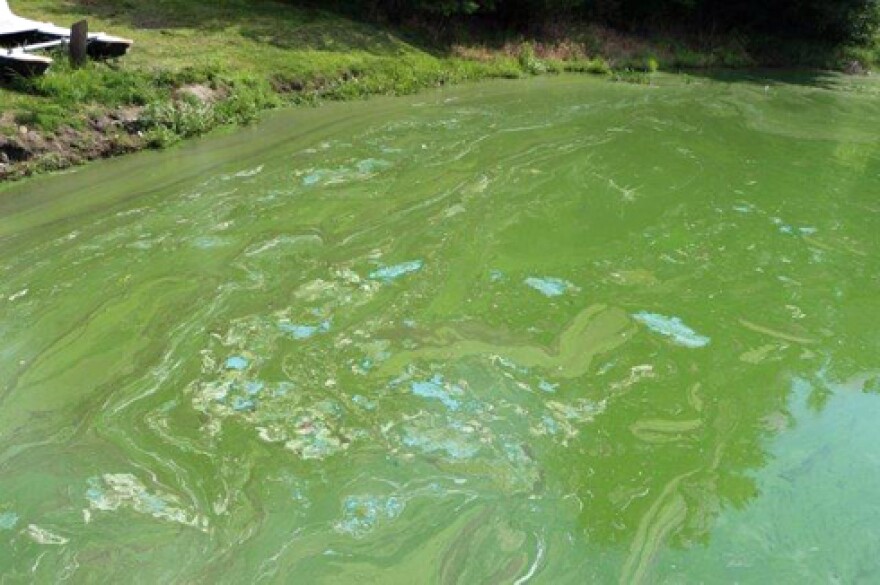Initial tests show the dangerous blue-green algae blooms in Skaneateles Lake have not affected the city’s water supply. Testing done by the city water department and health department officials this weekend shows the blooms do contain elevated levels of toxin, but have not turned up in tap water. Still, it might make some residents a bit uneasy. Professor of Biochemistry at SUNY ESF and Director of the Great Lakes Research Consortium Greg Boyer acknowledges the blooms are quite rare for this particular lake.
"I'm not aware of a bloom like this in Skaneateles Lake in the last 15 years. This is a highly unusual event for Skaneateles. It is not a highly unusual event for other lakes in the area."
Boyer says the blooms occur due to the combination of warm weather, bright sunlight, calm winds, and nitrogen and phosphorus washing into the lake. He says not to panic about the quality of the drinking water…the city’s intake pipes are farther out and deeper in the lake, away from where blooms typically form.

"I'm not particularly concerned about the water that will come out of your tap because they have a number of tools. They're monitoring the water, so they would apply the appropriate tool."
However, Boyer is concerned about residents who draw their water directly from Skaneateles at a depth of 10 feet or less. He advises those with private intakes to drink bottled water instead.
Boyer says the climate models for the area predict that these kinds of blooms will happen more often than previous years due to changing weather patterns.
"The springs get warmer earlier. The falls get colder later. So the growing season for these algae is longer. It's like dandelions in a lawn. You just give them a longer period to grow, and the blooms get bigger and bigger and bigger."
Boyer advises to keep pets and small children away from the lake because ingesting the blooms in a large concentration could be lethal. Onondaga County Health Department officials say to stay away from the blooms at all costs.



